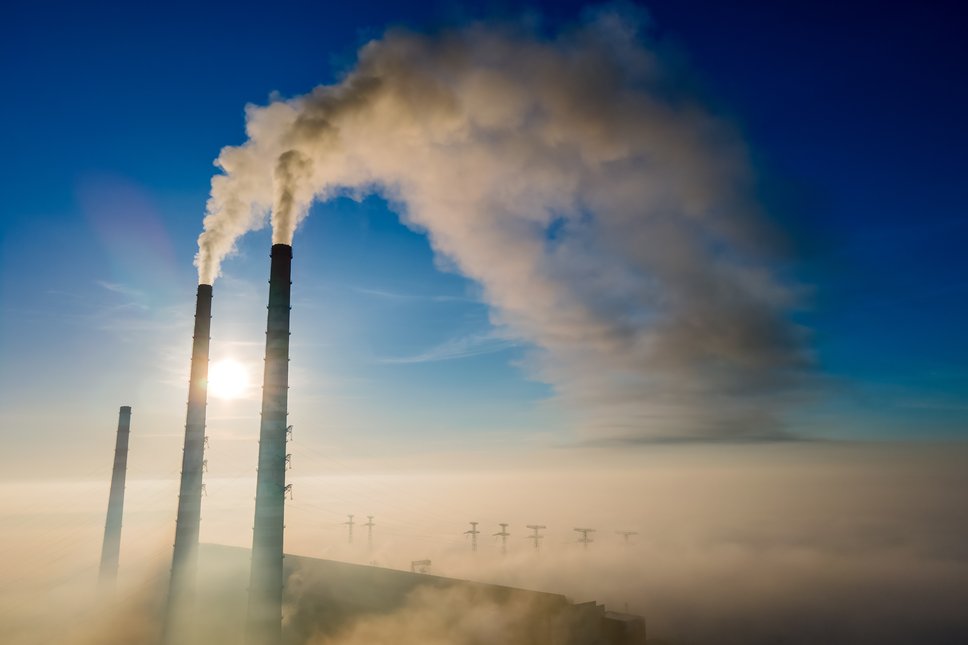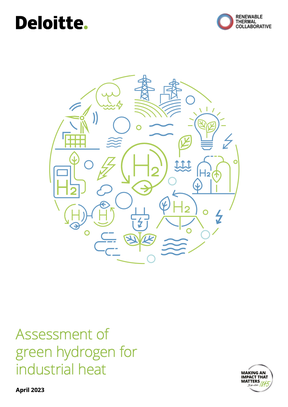Steeped in technology solutions to climate change, the Renewable Thermal Collaborative is building a community to transform industry. The Renewable Thermal Collaborative (RTC), which in 2021 received $10 million in the Lever for Change 2030 Climate Challenge, has used the funding to step into a particularly daunting area of the climate change landscape.

Jointly managed by the Center for Climate and Energy Solutions, David Gardiner and Associates, and the World Wildlife Fund (WWF), the RTC is working to slash industrial thermal emissions in the U.S. by 30 percent this decade.
That goal requires the RTC to take a deep dive into science, engineering, technology, and policy. Distilling all that and communicating the importance of the RTC’s work in a compelling way to a large audience is challenging.
And yet, when the sometimes-dense context is peeled back, the RTC’s role is relatively straightforward: It narrows the gap between technology that solves an intractable, global problem and the widespread use of that technology.
“Where the RTC fits is sort of a niche area,” said Daniel Riley, a Director on the Climate and Energy Team with WWF. “But it's an important area because it's been so long overlooked and is now gaining more attention.”
Industrial production—think manufacturing, making iron and steel, processing food and beverages, refining and chemicals production—accounts for 12.5 percent of U.S. greenhouse gas emissions in the U.S., which cause the planet to get hotter and change our climate.
The United Nations calls climate change “the single biggest health threat facing humanity,” and estimates that more than 90 percent of people breathe unhealthy levels of air pollution, largely from the burning of fossil fuels. The poorest and most vulnerable are hit the hardest.

Supercharging an idea
Provided by an anonymous donor, the $10 million awarded by the 2030 Climate Challenge tripled the RTC’s existing program budget and allowed the organizations that comprise the RTC to address the long-neglected issue of renewable thermal energy.
In two years, the RTC has rapidly scaled the first and only coalition of its kind, made up of “member” companies that use thermal energy, and “sponsors”—entities including advisors, developers, and non-governmental organizations that provide technology solutions to members shifting to renewable thermal energy.
“We’re not providing seed money for particular projects,” Riley said. “Rather, we’re using WWF’s convening power, brand, and credibility to bring the right pieces together and draw in companies who haven’t otherwise been engaged.”
In a broad context, the $10 million grant has enabled the RTC to:
- Develop and implement a comprehensive strategy, overhauling its previous model of operating only where it already had support;
- Carry out the RTC’s mission more rapidly and on a grander, more in-depth scale; and "supercharge” its idea by scaling up and getting it running in the thoughtful way necessary to work comprehensively on the long-overlooked area of thermal energy.
Among many specific initiatives, 2030 Climate Challenge funding has enabled the development of what Riley called “knowledge products,” such as the Renewable Thermal Vision Report, which examines six industrial sectors and identifies pathways for companies in those sectors to decarbonize. Other similar resources the funding made possible include the Green Hydrogen Technology Assessment, a report that evaluates the potential of hydrogen created by electrolysis and renewable electricity and explores ways to scale up the technology; and the Food & Beverage Playbook, which assesses approaches to decarbonize the industry and provides recommendations on how to switch to lower-heat technologies.
Since the start of 2020 and with the support that of 2030 Climate Challenge funding, the RTC has gone from 12 sponsors and 12 members to 44 sponsors and 35 members. Along the way, it also has composed and disseminated case studies on renewable natural gas and a solar thermal project, as well as hosted webinars and live events. In addition, the RTC developed a Just Transition and Diversity, Equity, & Inclusion (DEI) Strategy and built a more comprehensive communications and media strategy.
“Lever for Change has been an invaluable partner in helping the RTC scale up rapidly,” Riley said. “And the Bold Solutions Network continues to help us raise the profile of our work.”
Timing right for renewables shift
With the launch of the federal government’s Bipartisan Infrastructure Law in 2021 and Inflation Reduction Act in 2022, now is a particularly opportune time to accelerate the transition to renewable thermal energy and improve the quality of life of those hit hardest by the use of fossil fuels, Riley noted.
The RTC has taken advantage of these landmark funding initiatives, specifically by working with its members to align them with Justice40. The measure is an executive order from President Joe Biden directing that 40 percent of federal investments in climate change, clean energy, and other areas flow to communities which are marginalized, underserved, and overburdened by pollution.
A guiding force in that work is the RTC’s Community Benefits Advisory Board, which includes people from different environmental justice and labor backgrounds who are advising the RTC and companies on ensuring that renewable thermal energy transition brings positive change to communities while creating quality, sustainable jobs.
Those are several examples of how, with 2030 Climate Challenge support, the RTC distills and makes accessible the technical issues of climate change, which helps expand the application of those technologies. In addition, the RTC provides fact sheets and case studies and creates practical, large-scale solutions that consider disparities in climate change and pollution.
Beyond those, the RTC nearly doubled attendance at its 2023 annual summit of renewable thermal stakeholders and continues growing its membership and its work to shape federal policy.
“We help policymakers understand the urgent nature of the thermal challenge,” Riley said, “and we also help them understand what types of policy solutions are needed to unlock the renewable thermal solutions. Then we help our members and sponsors navigate the complex policy landscape.”
These are the early stages of what WWF’s Senior Director of Climate and Renewable Energy Marty Spitzer calls “building the community” that will transform industry.
“We are still early in the journey to decarbonize industry,” he said. “That’s why the 2030 challenge grant support was so important. People who care about these issues are finding a home, as evidenced by the near doubling of attendance at our second in-person summit in October.”
Partnerships created through the RTC are leading to tangible results, such as the development of decarbonization strategies among members and sponsors and the pursuit of Department of Energy funding for projects. Another is a systematic policy and market campaign between the RTC, the National Electric Manufacturers Association (NEMA), and the American Council for an Energy-Efficient Economy (ACEEE) to scale up the rapid deployment of decarbonizing industrial heat pumps.

Optimism borne of urgency, enthusiasm
All of it is essential if somewhat dense, technical work. Communicating how that work translates to on-the-ground positive change is difficult.
However, successful signs have emerged. In addition to robust gains in the number of the RTC’s members and sponsors, downloads of the RTC’s reports have increased 40 percent through June over the total in all of 2022. The RTC’s newsletter subscriptions have jumped by almost 80 percent, and the organization’s LinkedIn followers increased by 50 percent to more than 2,200.
“We know industry wants to produce goods more efficiently, more cleanly, and they want U.S. manufacturing to be the leading, most cutting-edge manufacturing in the world,” Riley said. “It's really a story about modernizing U.S. industry and powering it in a way that's more productive, more efficient, and cleaner at the fence line. And that’s a big part of why everyone should care about this.”
As challenging as it is to gain wider exposure for that story, Riley is optimistic that climate change awareness and momentum to use renewable thermal energy will grow, largely because of incentives in the Inflation Reduction Act.
“The thermal energy buyers we have in the RTC are ready to go,” he said. “They're looking for solutions. They want to do this. They want to break ground yesterday, find a way forward, and meet their climate goals.”
In addition, he sees intense enthusiasm and innovation among the RTC’s sponsors providing renewable thermal energy.
“It's really incredible—green hydrogen, thermal energy storage, electrification, solar thermal—a whole variety of technologies are coming online,” Riley said. “And with the RTC as a center where they can come together, you start to see how we can stack these technologies to really bend the curve.”